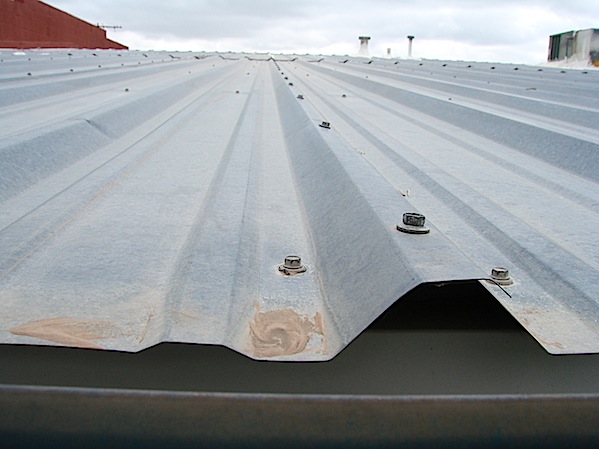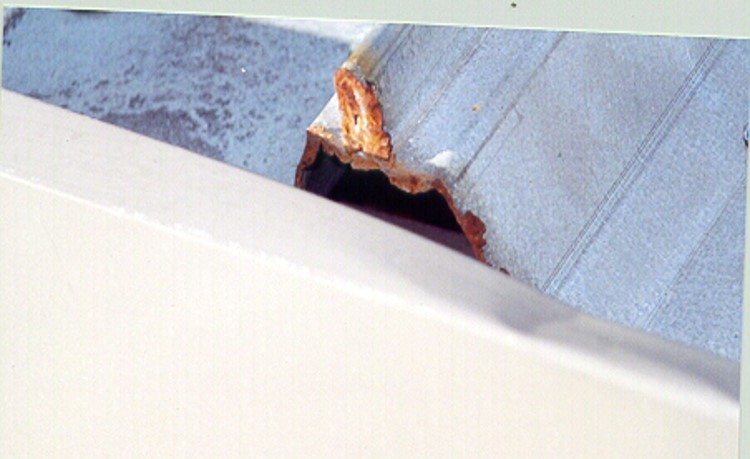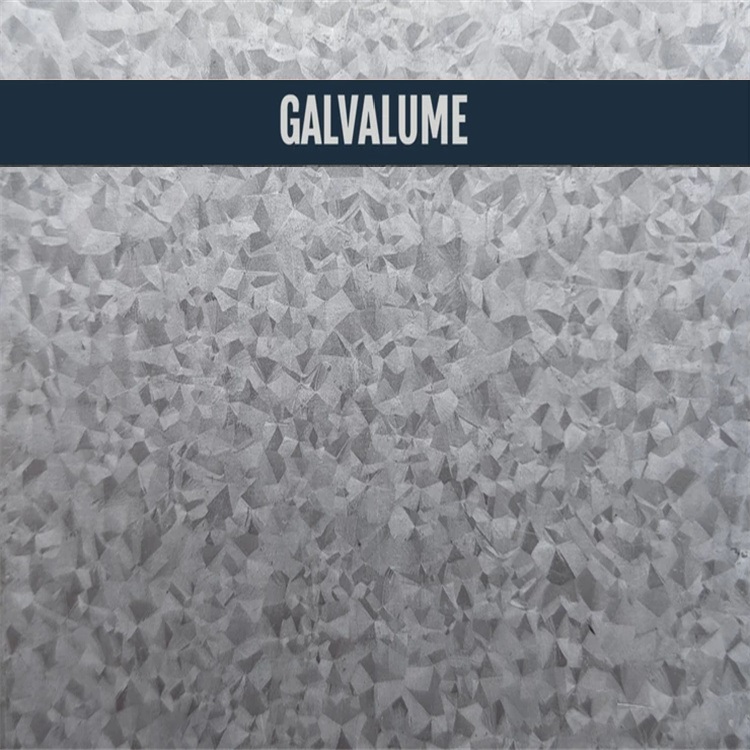
The galvalume steel coil uses the cold-rolled steel sheet as a substrate and is solidified by 55% aluminum, 43.4% zinc, and 1.6% silicon at 600 °C. It combines the physical protection and high durability of aluminum and the electrochemical protection of zinc. Galvalume steel coil has good corrosion resistance. It can balance the protective and repair effects of zinc with the anti-corrosion effect of aluminum, extending the service life of steel sheets.
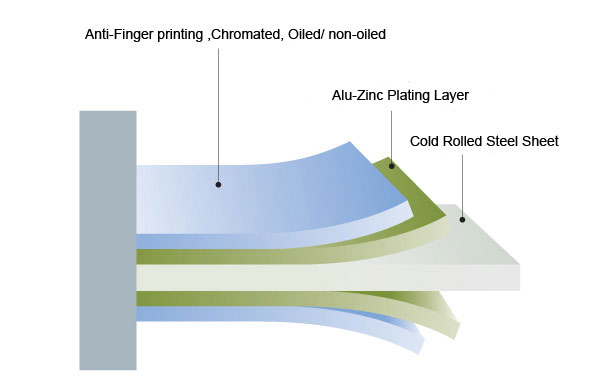
| Surface Structure | Normal spangle | Regular spangle | Minimized spangle |
| Surface Finish | 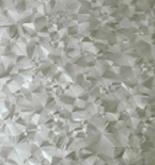 | 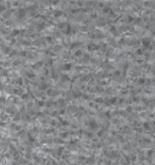 | 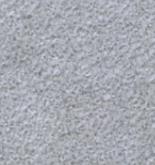 |
DISADVANTAGES
Cutting Edge Rust
Althought Galvalume steel (GL) corrosion resistance is better than that of galvanized steel in most environments, but over the time, the rust almost always starts at the joints and just to complicate it more, there can be galvanic corrosion. It happens where the coating de-laminates and peels back from the sheet edge. This is primarily due to weathering. If left untreated, the exposed metal surface will corrode and eventually perforate. Cut edge corrosion can take its toll, impacting the metal roof’s integrity and potentially resulting in a full roof replacement, with significant financial implications for you and/or your client.
Welding Performance
Although the corrosion resistance is higher than GI. but the weldability of GL is not as good as that of GI, especially when using electric resistance welding, the molten coating metal will stick to the electrode tip. Because the hardness of the metal adhered after melting is relatively high, the composition of aluminium also cause the removal efficiency using ordinary grinding tools is very low, which will cause the electrode head to be scrapped, so the welding process should be minimized during use.
